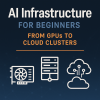Artificial Intelligence (AI) has quietly threaded itself into the fabric of modern professional life, reshaping how people work, think, and solve problems—often without drawing attention to the magnitude of its impact. While technological revolutions of previous centuries introduced tools that extended human labor, AI represents something categorically different. It amplifies cognition.
Whereas the industrial era mechanized physical effort, the AI era automates analysis, prediction, and reasoning—core components of human expertise. This transformation is happening in surprising places: radiologists interpret scans with the support of algorithms that can identify anomalies invisible to the naked eye; teachers use digital assistants to detect learning gaps; factory floor managers rely on predictive maintenance systems to anticipate equipment failures before they happen. The pattern is consistent across industries: AI is not merely streamlining efficiency—it is redefining mastery itself.
In healthcare, for example, diagnostic systems trained on millions of medical images help clinicians identify rare diseases faster and more accurately. Yet, rather than replacing doctors, such systems are becoming trusted partners. Physicians now spend less time searching for patterns and more time applying judgment, empathy, and context to each patient. The human ability to interpret emotionally and ethically is what grounds AI’s recommendations in care that feels personal and compassionate rather than mechanical.
In law, AI-driven platforms review contracts, summarize case law, and even predict litigation outcomes. What used to take junior associates days can now be accomplished in minutes. But law firms are finding the real value lies not in eliminating roles but in reallocating human capacity. Lawyers are freed to think strategically, negotiate creatively, and engage with clients in deeper, more advisory relationships. AI does the groundwork—humans decide what the groundwork means.
Education, too, is evolving beyond traditional boundaries. AI tutors adjust exercises in real time to match each student’s capability and pace. For teachers, this means shifting from being content deliverers to mentors who focus on motivation, social connections, and critical thinking—the kind of nuanced human support that algorithms cannot replicate. And in fields like architecture or design, AI generates multiple prototypes at lightning speed, giving professionals space to critique, refine, and imagine new possibilities rather than starting each draft from scratch.
Yet these advances also bring tension. Some professionals fear displacement; others worry about the erosion of judgment in a data-driven world. As algorithms take on more cognitive tasks, the challenge is not only to ensure fairness, transparency, and accountability but also to sustain a meaningful sense of human purpose. That balance—between automation and autonomy, precision and empathy—is fast becoming the defining frontier of 21st-century work.
What is perhaps most fascinating about the AI revolution is its subtlety. Instead of sudden disruption, many industries are undergoing a gradual metamorphosis—one that often begins as an efficiency upgrade but evolves into a redefinition of what it means to be a professional. This shift is deeply human because it requires introspection: how do we as individuals define our value when a machine can perform parts of our job faster or cheaper?
Consider the doctor confronting an AI diagnostic system. At first, there is reluctance—questions about accuracy, liability, and trust. But over time, as outcomes improve and collaboration deepens, the doctor discovers new strengths: the ability to use data as a compass for more personalized, human-centered care. The physician becomes a synthesizer of algorithmic outputs and emotional nuance, bridging technological precision with bedside wisdom.
Teachers experience something similar. Intelligent tutoring systems can adapt lessons to each student’s pace, allowing educators to focus on mentorship rather than rote instruction. The role evolves from a transmitter of knowledge to a guide through understanding. The skill set thus expands to include digital fluency, emotional insight, and the ability to use AI as a pedagogical co-creator rather than a replacement.
Lawyers, meanwhile, find themselves practicing in a dual environment of automation and ethics. Automated contract analysis tools can surface risks across thousands of documents, but legal professionals are still responsible for discerning intent, context, and morality. These are dimensions no algorithm can yet master, and they ensure the continued centrality of human judgment even in a machine-augmented profession.
Beyond these realms, creativity itself is being reimagined through partnership with AI. Engineers and designers use generative algorithms to test infinite configurations, while artists employ neural networks as brushstrokes for new mediums of expression. Accountants rely on intelligent software to flag irregularities in massive data sets, allowing them to devote more time to interpretation and strategic planning. Journalists use natural language models to summarize events or detect misinformation, then step in to contextualize truth and meaning.
Each of these adaptations represents neither surrender to automation nor nostalgic resistance but a middle path: reinvention. Professionals are learning that the most resilient careers are not those that compete with AI but those that collaborate with it. This demands new literacies—analytical thinking, data reasoning, ethical awareness, and the ability to design workflows where human empathy complements machine insight.
The future of work is thus less about replacement and more about reallocation—about humans stepping into roles that emphasize emotional intelligence, critical reflection, and creativity. Just as past generations mastered mechanical tools, today’s professionals must learn to choreograph with intelligent systems, orchestrating a rhythm where both mind and machine play harmoniously toward a shared purpose.
In this new landscape, productivity is no longer measured solely in speed or output but in meaning, interpretation, and the capacity to derive wisdom from information. AI may handle the tasks, but humans define the questions worth asking. As this symbiosis deepens, the professions of tomorrow are being shaped not by fear of automation but by the invitation to unite the computational with the compassionate—a union that just might prove to be humanity’s most important act of creation yet.









